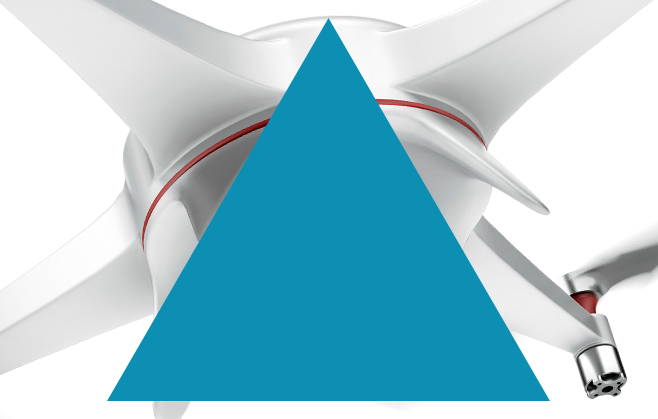
Drones: Revolutionary technology or safety hazards?
With drones hot on the scene for the past couple of years, usage has skyrocketed. But with airspace now a little more congested, how will this impact the future, and will new regulations assuage safety concerns?
With more and more individuals acquiring drones for photographic and filming purposes, we’re seeing a change in the type of content being produced, with amateur aerial videos and photography becoming widespread. During 2015, analysts revealed that the number of consumer drones sold worldwide exceeded 1 million, likely for the purpose of capturing never-before seen angles.
Safety though, is perhaps the largest issue facing drone production growth and usage. Just a few months ago for instance, a drone crashed into a British Airways passenger plane as it prepared to land at Heathrow Airport- reportedly there had also been several near-misses between drones and aircraft prior to the incident. A consumer drone also crashed onto the lawn of the White House, sparking fears that such drone piloting in future could lead to further collisions, and even planned terror attacks. To our minds, privacy is also another concern, with drones potentially used for capturing civilian images or sensitive data. Regulations are in place, but mainly when it comes to commercial usage- in the US for instance, the FAA has made it mandatory for drone users to register their aircrafts, with civil fines in place for those caught flying unregistered ones. In the UK, the House of Lords EU Committee has sanctioned for compulsory registration for all commercial and civilian drones, although there are currently no laws in place to stop anyone purchasing drones for themselves. The only stipulation is that the drone must weigh less than 20kg, not flown within 150 meters of a congested area, 50 meters of an object or person not under the control of the pilot, or used by individuals for commercial purposes.
In terms of commercial use, there has been a rise in the number of drones used for military purposes, defence, surveillance, agriculture, search and rescue operations, and filming. In fact, the commercial drone market is expected to reach over $5.59 billion by 2020, up from $15.22 million back in 2014. In future, we imagine this expansion will see drones being used across the board for delivery purposes by larger and smaller brands. Already, specific industries such as the medical industry are using UAVs to deliver supplies to hard to reach locations. And there’s also the promise that we will one day see larger drones in use for carrying passengers- already for instance, a Chinese company showcased a passenger drone prototype at this year’s CES convention in Las Vegas.
As far as the future of large scale global enterprise is concerned, one of the biggest ways in which drones will be leveraged, is for global internet access. Facebook’s laser beaming drones are just one example of how we can expect data to soon be delivered from above. The goal of this is to enable Internet connectivity worldwide, and particularly in developing countries where access is poor. For Facebook, the company’s drone fleet will be positioned around 27 km above the ground, and constantly be in motion. Google is competing with their own initiative, Project Loon, which comprises over 1000 balloons positioned in the stratosphere. These balloons will likely function in the same way as drones, in that they will be flown up into the air to a distance of 20 km, while software control directs them into position depending on wind direction. And like with Facebook’s drones, these will then beam down Internet connection received by antennas on the ground.
Do you own a personal drone for capturing aerial footage? How do you think drone technology can be used in future? We’d love to hear your thoughts, so please tweet to us @PracticeDigital and share your comments on our Facebook page.




